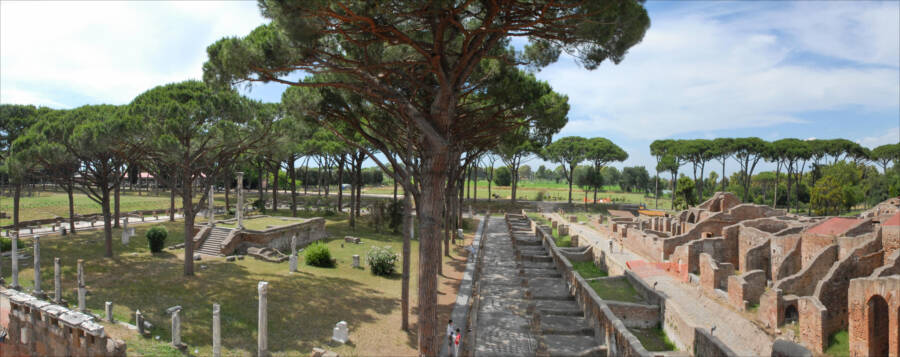The new pieces of the fasti ostienses align with previously discovered fragments recovered at the same site, dating back to 128 C.E.

Italian Ministry of CultureFasti ostienses fragments recovered from Ostia Antica, chronicling the life of the emperor Hadrian.
The Roman emperor Hadrian has quite the legacy. Known as one of Rome’s “Five Good Emperors” and later remembered by historians as a “benevolent dictator,” his renown stems from his various travels throughout his roughly two-decade reign and the numerous civil and military construction projects planned under his rule.
There have, however, been several contradictory accounts of Hadrian and his rule of the Roman Empire. Some accounts have described him as incredibly generous, while others describe his immense cruelty, ambition, and pride.
Now, a new discovery from Ostia Antica, an archaeological park near Rome, could shed some light on the true life of Hadrian. As The Guardian reports, archaeologists excavating the site just uncovered two inscribed marble fragments of what is known as fasti ostienses, an official sort of calendar that provided details on the daily events of emperors and other Roman officials.
The inscriptions on these slabs were written by the pontifex Volcani, who at the time was the highest local religious authority.
Archaeologists matched one of the two newly discovered fragments to another one previously found at the site, dating back to 128 C.E., which would place them within Hadrian’s reign. Inscriptions on the fragment itself refer to events that occurred that year, including Hadrian receiving the title pater patriae, “father of his country,” that January.
The inscription continues to say that Hadrian celebrated the occasion by offering a congiar dedit, or donation of money, to the Roman people.
Another inscription, dated April 11 of the same year, chronicles Hadrian’s trip to Africa between July and August, just before he returned to Rome.
Yet another inscription references Hadrian’s consecration of a building in Rome, which experts believe could refer to either the Pantheon or the Temple of Venus and Roma, around August of that year.
Some experts hypothesized that the consecration of whichever structure this may have been would have marked the 11th anniversary of Hadrian’s accession to the throne in 117 C.E.
Speaking with Arkeonews, Allesandro D’Alessio, director of the Archaeological Park of Ancient Ostia, described the find as “an extraordinary discovery that, if on the one hand, increases and complements what we know about the activity of the great emperor… on the other hand it reconfirms the immense potential of ancient Ostia for an ever deeper knowledge and popularization of our past.”
Minister of Culture Gennaro Sangiuliano said that the excavations at the Archaeological Park of Ostia have provided “treasures of inestimable value and very precious documentary sources to understand the activities of the great emperor Hadrian.”
In addition to the marble slabs, archaeologists at Ostia have uncovered “various decorations” and “extensive portions” of an intricate mosaic floor, which Sangiuliano said will soon be open to the public.
The newly recovered fragments add to what is already an ever-growing collection of records discovered within the past century. Researchers first discovered pieces of fasti ostienses at Ostia Antica in both 1940 and 1941, and once more in the years between 1969 and 1972 — including a fragment that pairs with one of the newly discovered fragments.
In combination, this slab chronicles the years between 126 and 128 C.E., and other fragments with dates ranging between 49 and 175 C.E. are currently on display at the Vatican Museums.

Wikimedia CommonsThe ancient remains of the market square at Ostia Antica.
Ostia Antica itself lay in ruins for hundreds of years, despite being less than 19 miles from Rome. It wasn’t until the 19th century that archaeologists began to explore its various structures, which included a theater and the remains of baths, schools, temples, and a synagogue.
The settlement once served as a major Roman port and commercial center at the mouth of the Tiber River. According to Ancient Origins, legend suggests that Ancus Marcius, the fourth king of Rome, founded it in 620 B.C.E. to access the river’s salt pans, though there’s no real archaeological evidence of this.
In any case, the site has remained an important archaeological treasure trove for years, with many more discoveries to be made in the future.
After reading about this new discovery, read about this ancient Hercules-like statue found in a Roman sewer. Or, learn more about Rome’s past by reading about the mad emperor Commodus.





